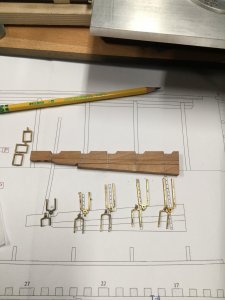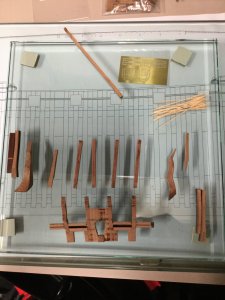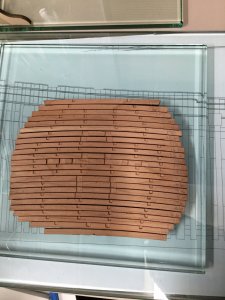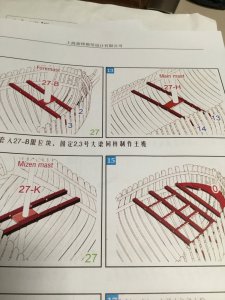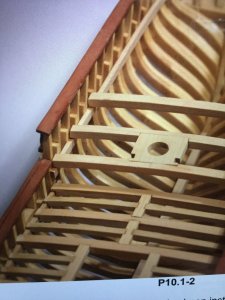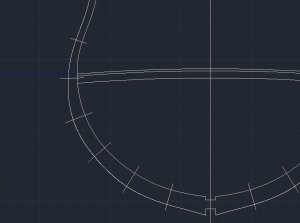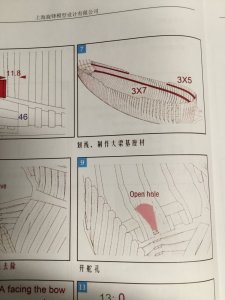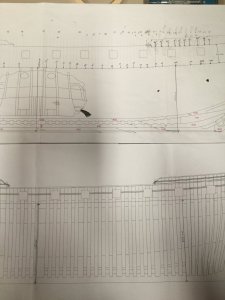Build update: I started working on the deck beams and also sanding the inner and outer hulls. I tree-nailed the deck beam clamps (bamboo tree nails made on my Vanda-Lay tree-nail maker) on the inner hull to each frame for added strength (these treenails will not be visible). I decided not to finish the stern until later because it is so fragile and poorly supported. I will install the stern after all the hull sanding and fairing is done and the deck beams are in place so I do not have to manipulate the hull and break the stern in the process.
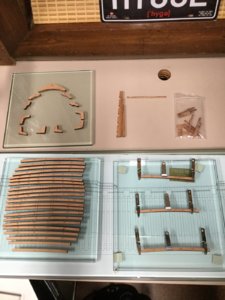
Deck beams 1-24 assembled. Each beam made up of two parts ( a & b) glued together. Each half beam has markings denoting the notches to be cut, 1 mm deep.
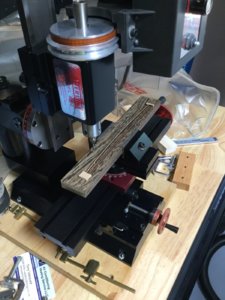
I am using my Sherline mill to notch the beams. I made a jig using the outline of the beam from the sheet containing the longest half-beams glued to a stiff board. Since all the beams have the same camber, I just fit each beam into the jig, clamp it, and mill the notch. All notches have same depth, so the Z axis is fixed for a 1 mm cut. All I have to do is move the X and Y axis to locate the notch. Takes about 5-7 min to notch both sides of a beam with this system.
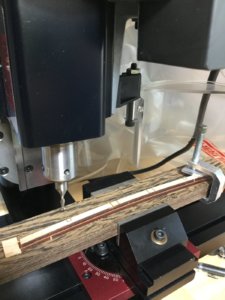
Beam positioned and clamped, (one clamp shown, others removed for clarity) ready to mill the notches
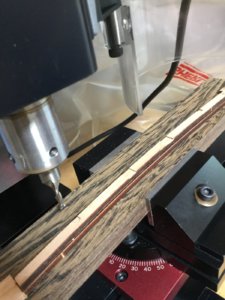
Beam notched. clamps removed for clarity
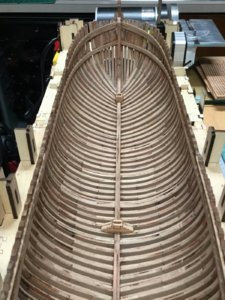
Inner hull's first sanding. I tree-nailed the deck-clamps to each frame.
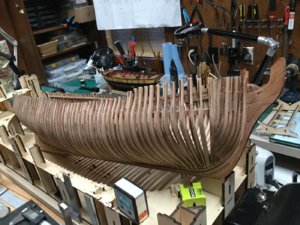
First sanding and fairing of the of the outer hull.

Deck beams 1-24 assembled. Each beam made up of two parts ( a & b) glued together. Each half beam has markings denoting the notches to be cut, 1 mm deep.

I am using my Sherline mill to notch the beams. I made a jig using the outline of the beam from the sheet containing the longest half-beams glued to a stiff board. Since all the beams have the same camber, I just fit each beam into the jig, clamp it, and mill the notch. All notches have same depth, so the Z axis is fixed for a 1 mm cut. All I have to do is move the X and Y axis to locate the notch. Takes about 5-7 min to notch both sides of a beam with this system.

Beam positioned and clamped, (one clamp shown, others removed for clarity) ready to mill the notches

Beam notched. clamps removed for clarity

Inner hull's first sanding. I tree-nailed the deck-clamps to each frame.

First sanding and fairing of the of the outer hull.






